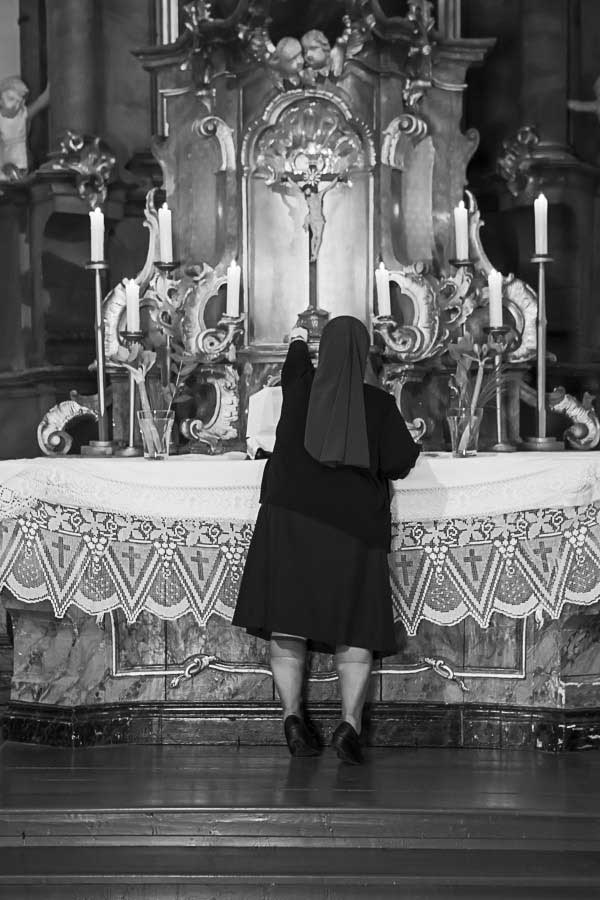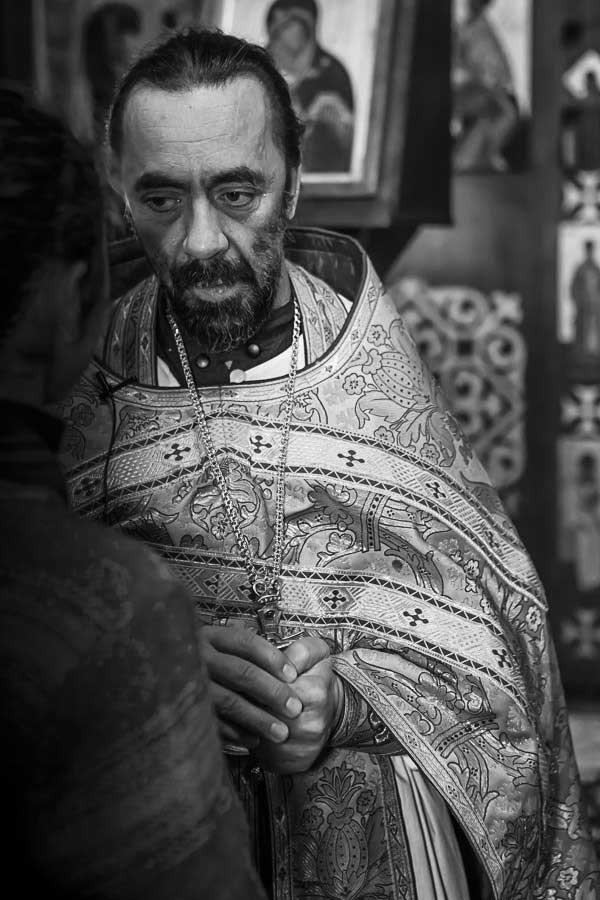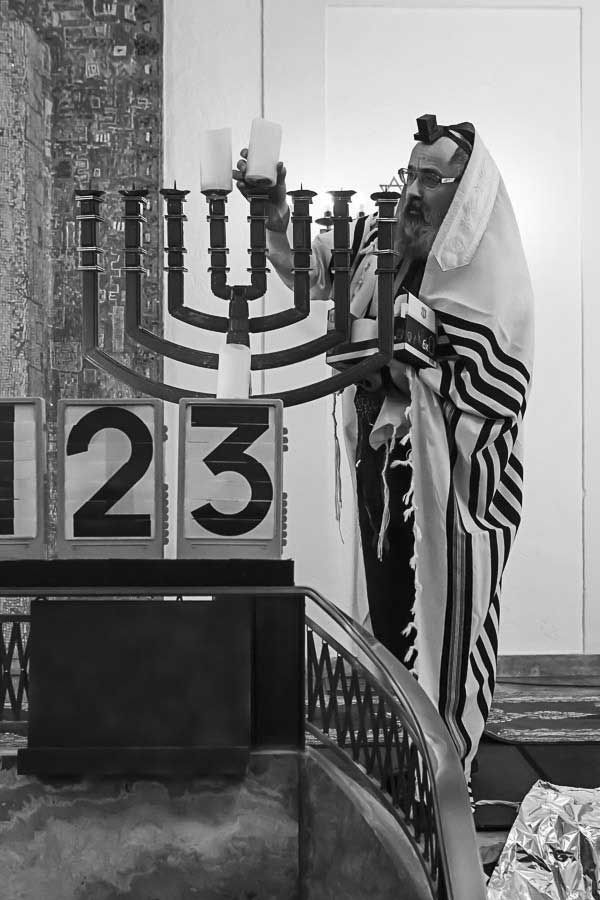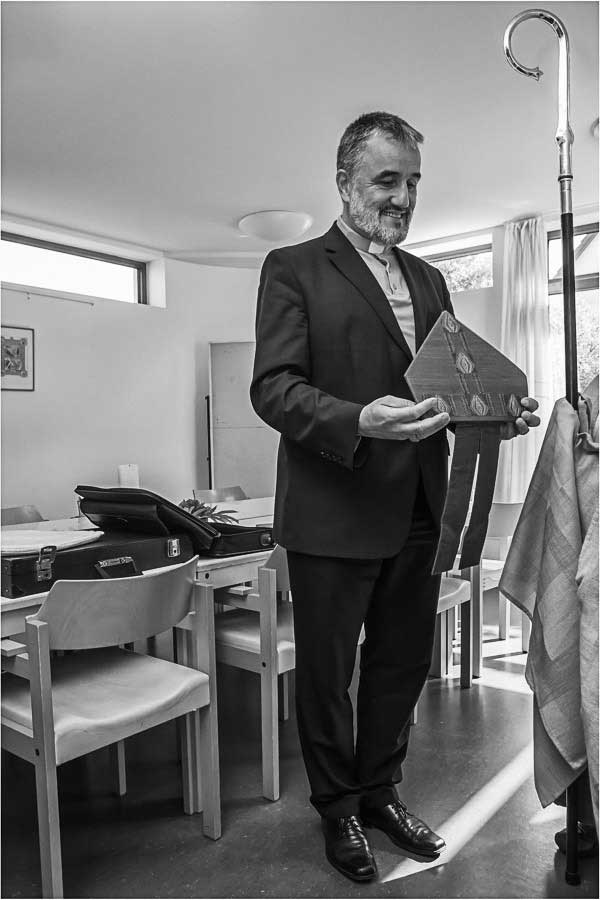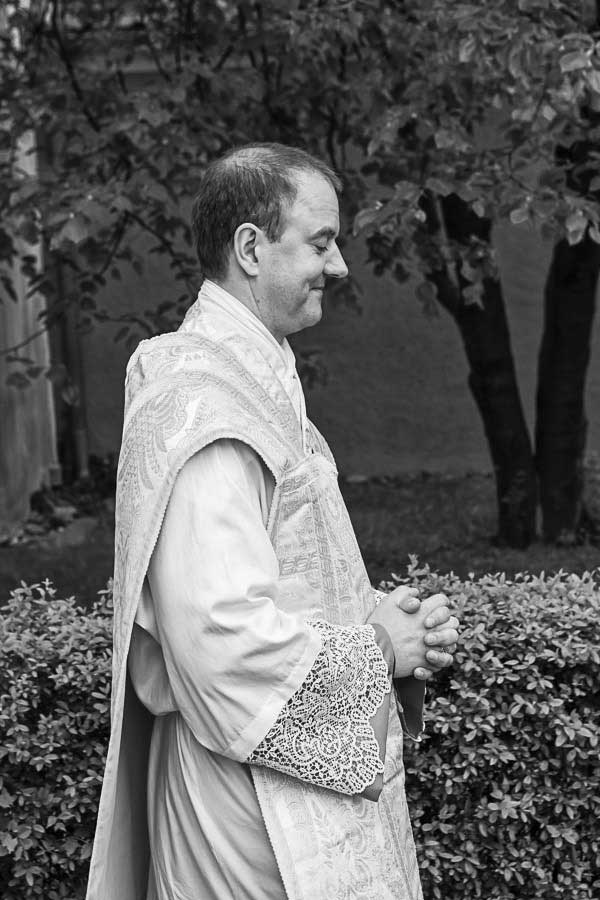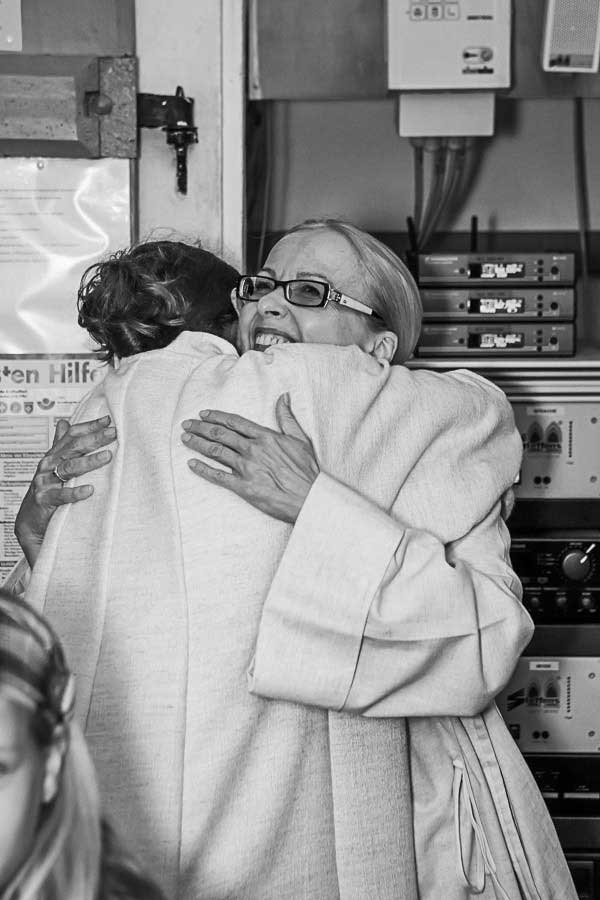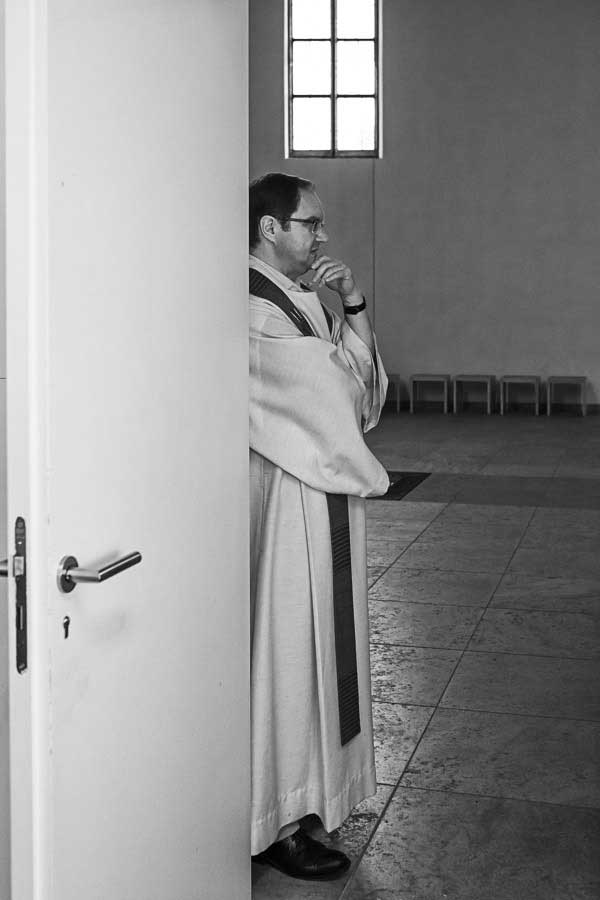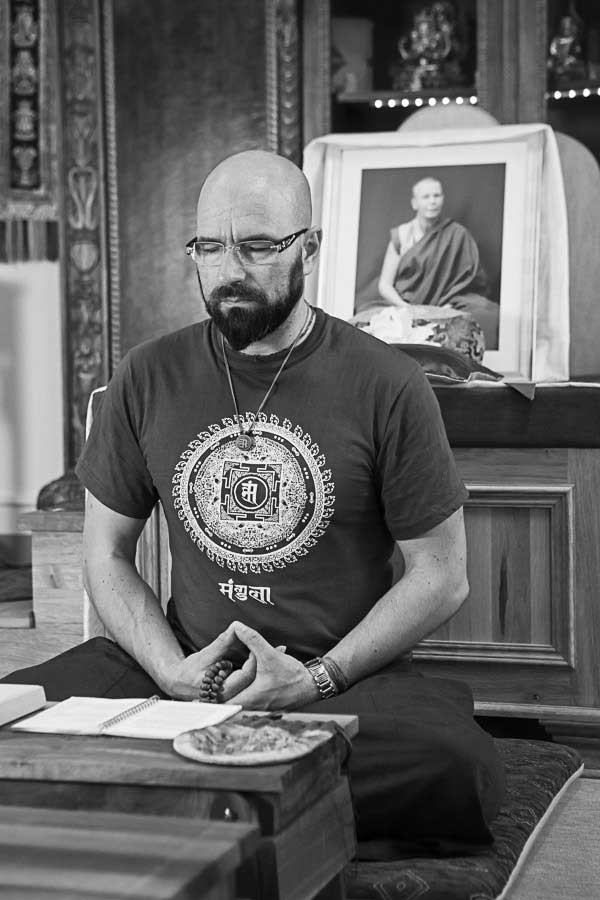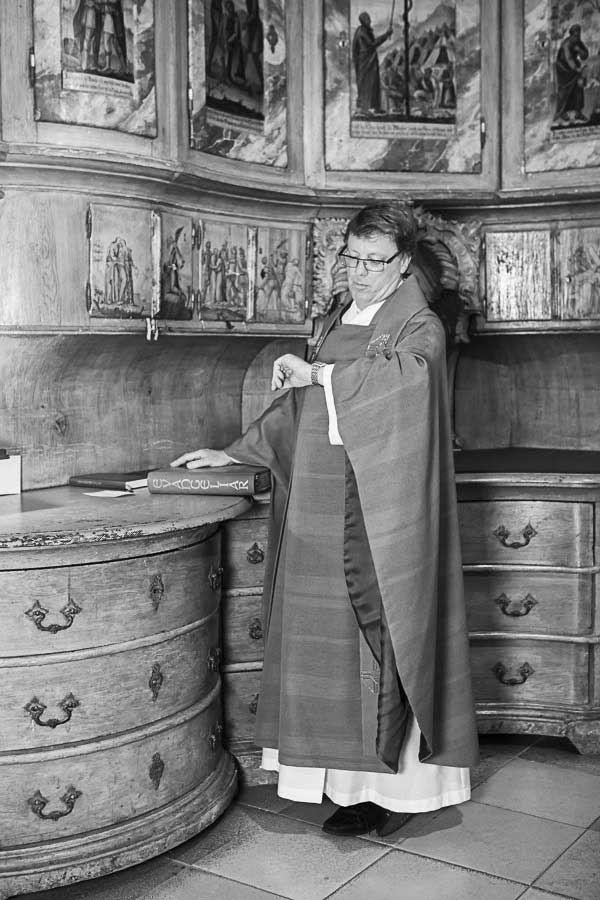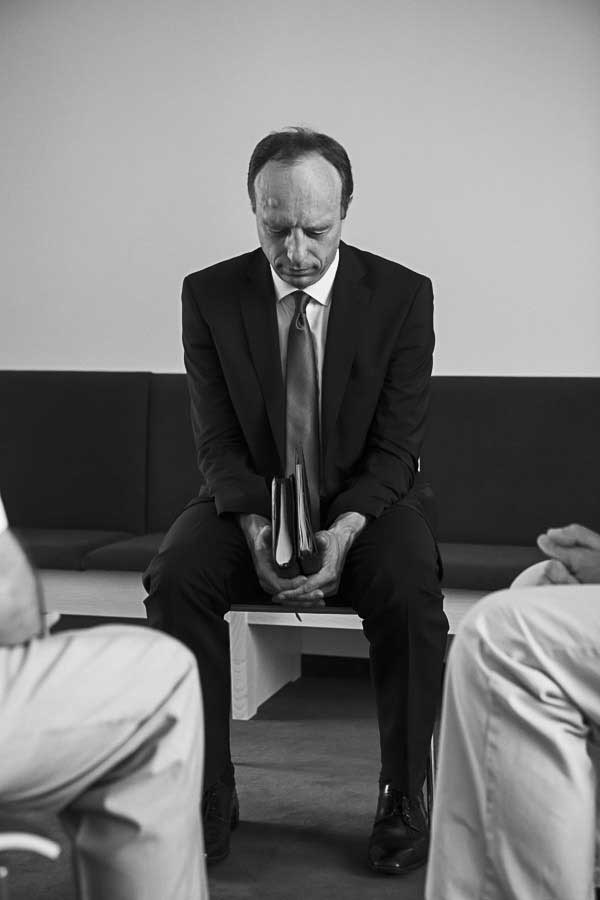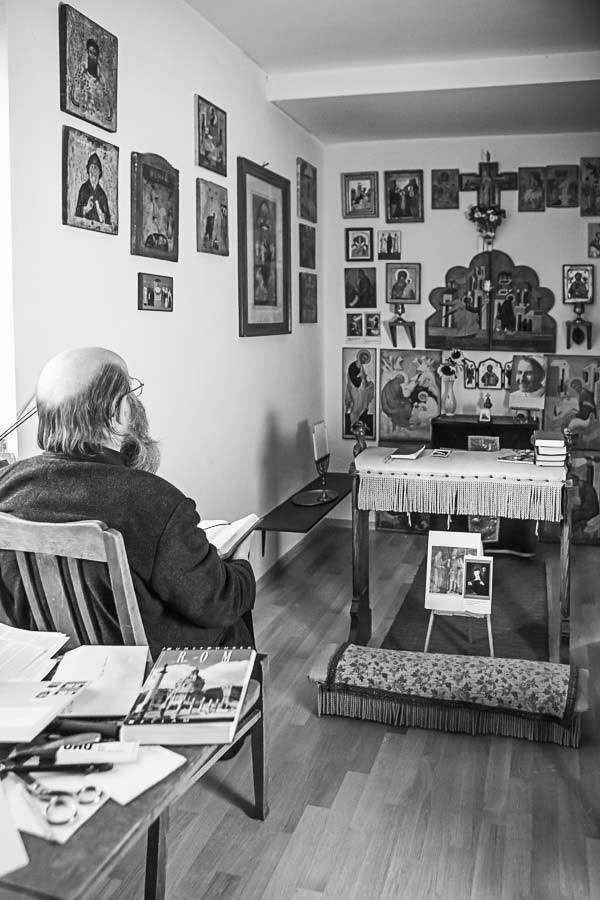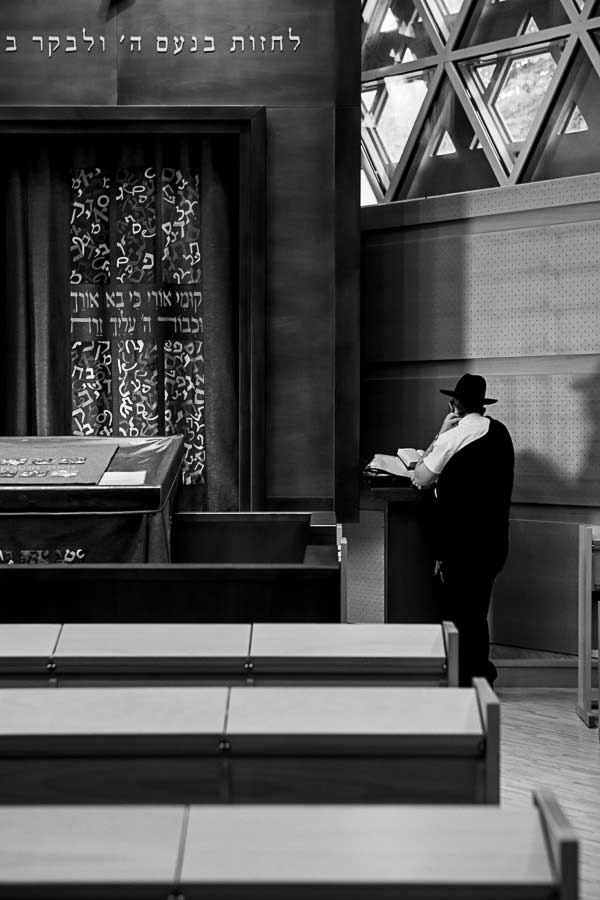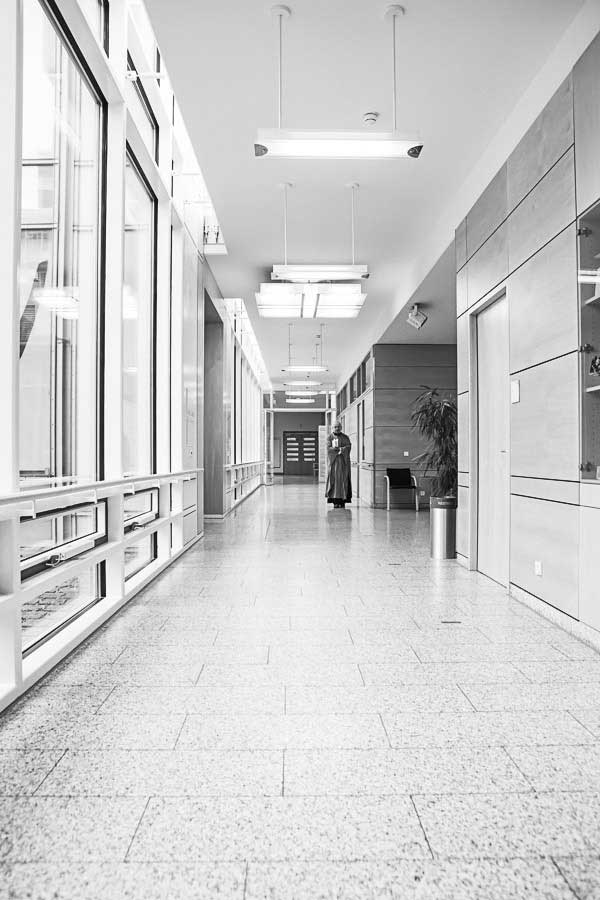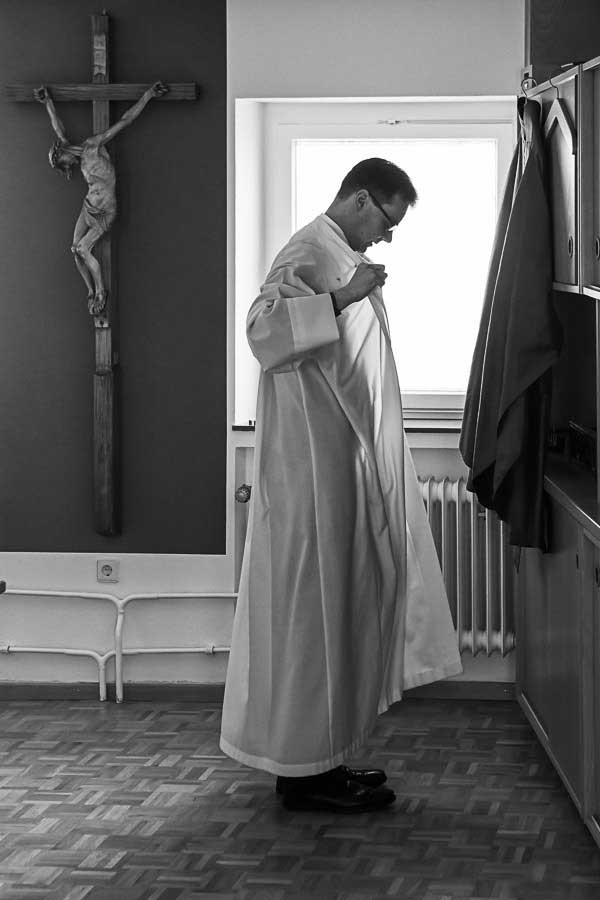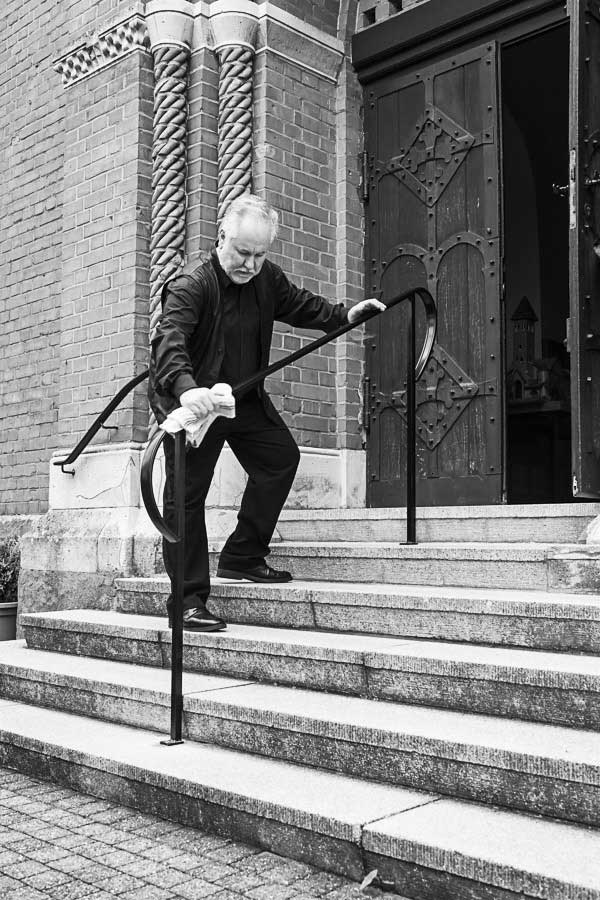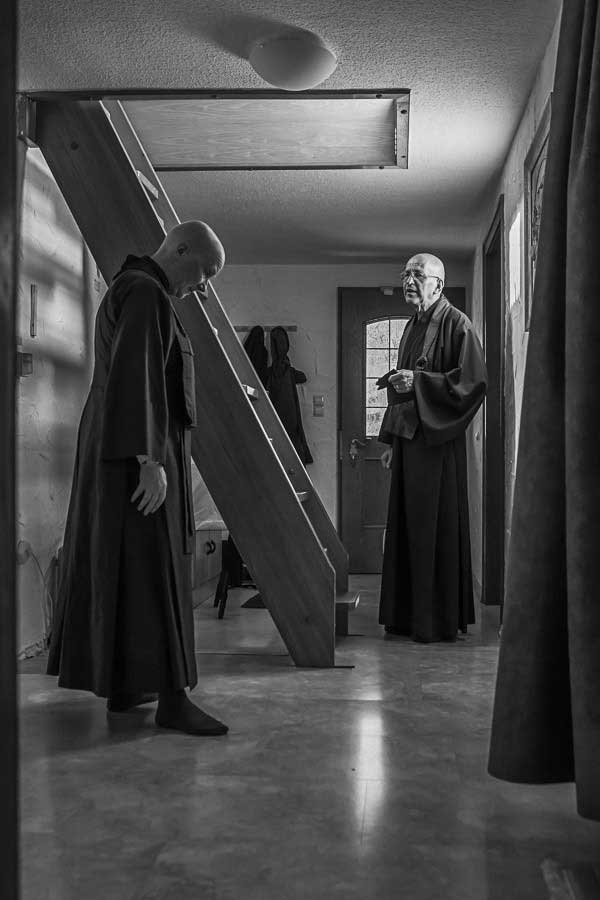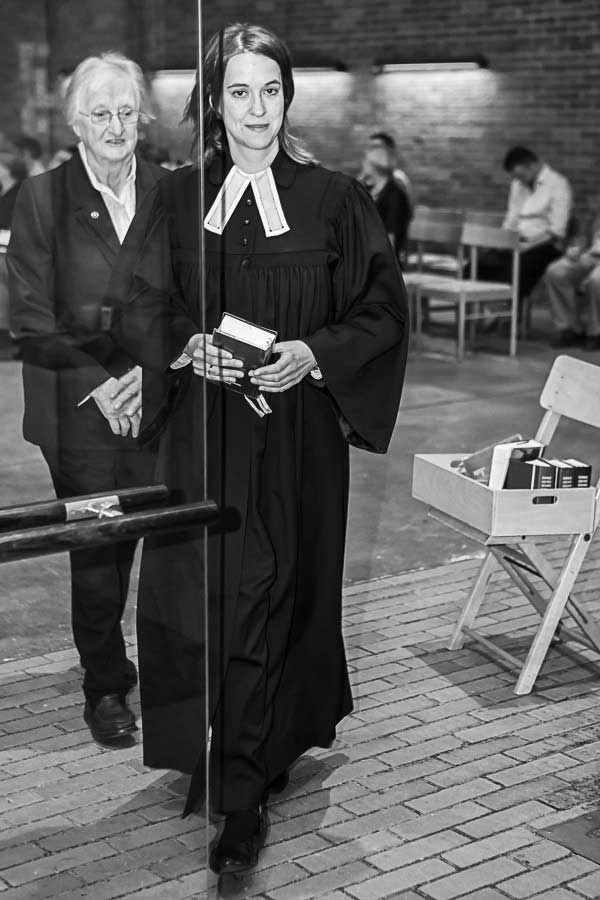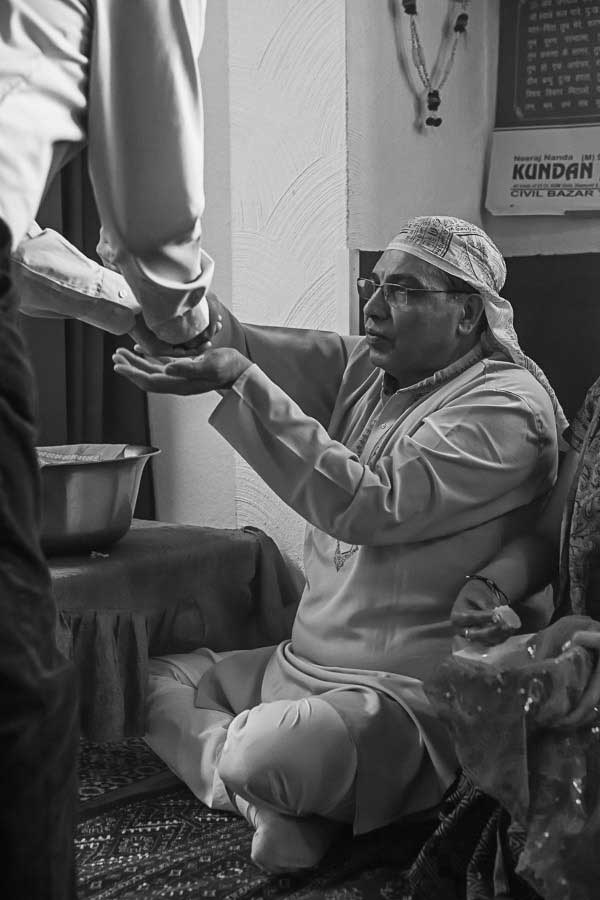The photographic work on behalf of the soul is concerned with individuality and conformity in the religious ceremony.
My intention was to make the special, the typical, the individual of the respective clergyman visible, and to find out how strongly the influence on the ceremonial process is.
In the beginning there was a long-standing interest in religion and spirituality. As a psychologist, on the other hand, I am interested in people and their unique and diverse personalities. Accordingly, in my photo-project, I placed clergy, as mediators between men and the divine, as celebrants of the cult.
The hypothesis was that in the time before and after a religious ceremony, both spirituality and person could find the most manifold expression. But, of course, there was also the curiosity of what might happen in this phase, which is often largely hidden from the believers. I wondered how much spirituality is expressed here and how much the event is shaped by the personality of the clergyman. How much routine and activity is found in these phases and how much space remains for contemplation and spiritual preparation? How do the clergy differ in this respect over the different denominations and religions? But it was never my intention to compare the clergy before and after worship.
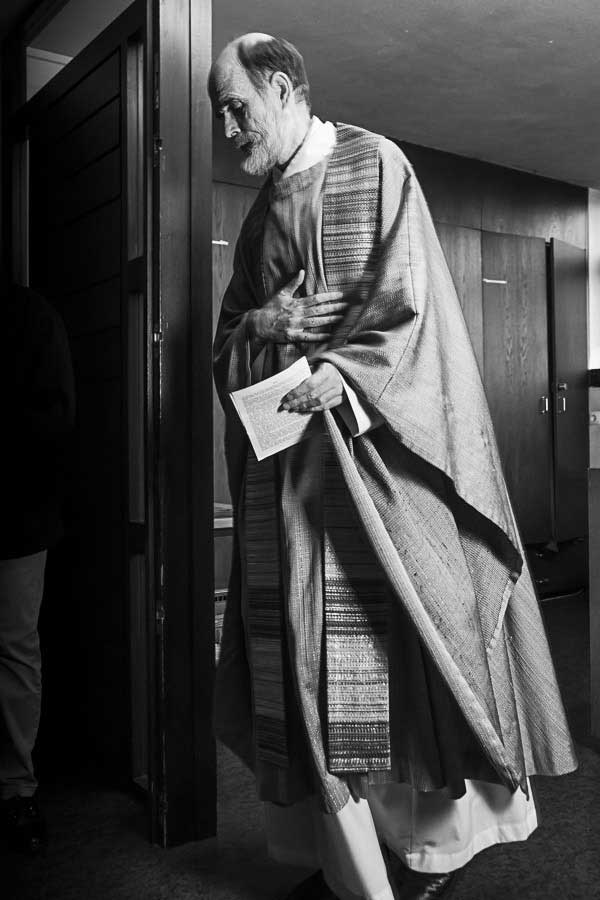
What I have experienced is variety on the one hand. The individual approach and personality of the respective clergyman has a clear effect on the course and mood in the period before and after the service. This is especially evident within a denomination where the liturgy is established. From more solitary minutes, alone or among many, to an open, funny, hearty time, characterized by numerous encounters, the bow stretches. While some prefer the contemplative calm and preparation, others appear to be in the active center of a large group. This connection with the community is also reflected in what happens afterwards. While some remain for themselves after the service, others are in the middle of the church, say goodbye to each individual, and are available for talks.
But what happens before and after a service? In the time before the service, the actual worship service is of course prepared. Lights and candles are lit. Songs and assignments with the organist, a choir or a band are coordinated. Intercessions are discussed. Many clergymen read the notes on their sermon again. There are, however, also talks that have nothing to do with the worship service and which include organizational themes of all kinds. Most of the clergy have one or more helpers who are on hand. Other clergy, e.g. those who are working in the hospital have to prepare the preparation alone. Almost all of them move before the service and pull the garments provided for it. In fact, just before the beginning of the worship, a brief period of peace and reflection is at hand. The Protestant clergy sit in the first row in the church; the Catholic clergy meet with the ministers in the sacristy and speak a prayer before they enter the church. And then begins the worship, the ceremony, the cult.
Afterwards, the parishioners will be adopted, some of them personally. There will be further talks. Sometimes eating together or drinking only coffee or tea. It is tidied up. Some have to go directly to the next worship and experience the “after” only after the second or third worship.
There are, of course, some differences, but also common ground between the religions. In the mosques, for example, the relaxed conversation with the people with a cup of tea in my memory remained. Before the Vedic ceremony was cooked. Afterwards, mats were rolled up on the floor and the community had eaten together.
Despite all the differences in the liturgy, rituals and routines, the connection was most evident in the last few minutes before the beginning of devotion, in this silence and reflection. Overall, according to my impression, the course of the ceremony itself differs much more strongly than the time before and after. For the series, I photographed 41 clerics of different religions in Germany. In about 30 minutes before and 15 minutes after the service or religious ceremony essential and special moments were documented.
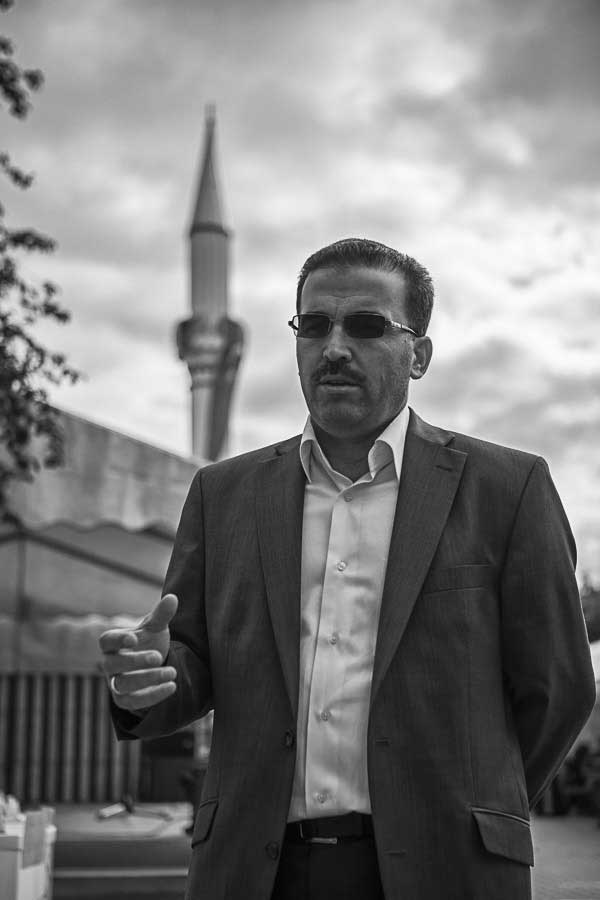
About Joachim Michael Feigl
Joachim Michael Feigl is a German photographer and psychologist. His long-term and often international photo projects are mainly photographed in analog medium format but also digitally like this project. Photographic focus is on the behavior and experience of people and their impact on the environment. Photo works have been shown in solo and group exhibitions in Germany and France. With the 82 images of the series a photo book was published at Beuroner Kunstverlag. The book includes selected short text written by the participants about experiences during the time before and after the service. [Official Website]
